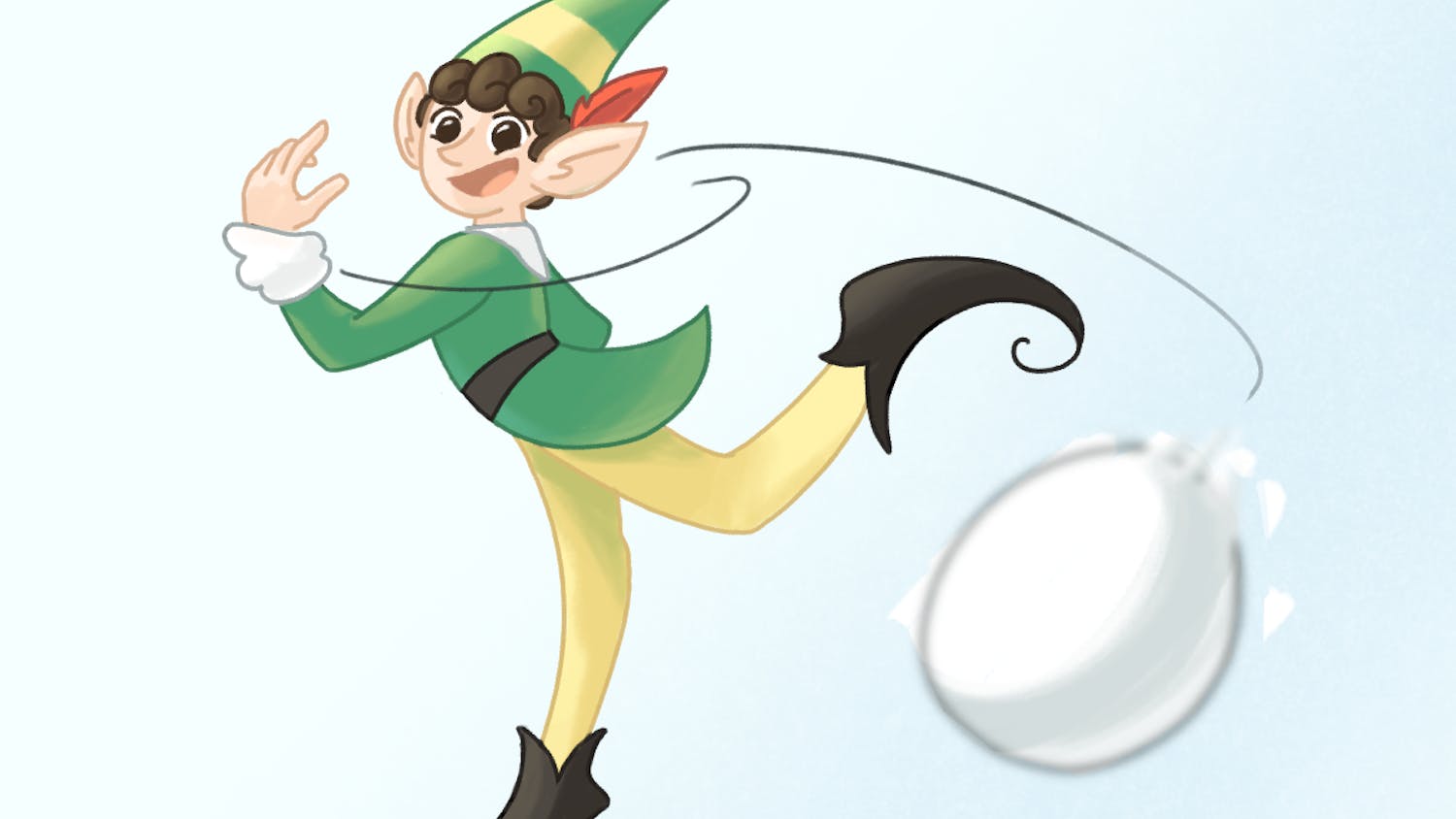The 2015 Oxford Dictionaries Word of the Year was not a word at all but rather an emoji, specifically the little smiley face that is crying out of joy.
For anyone who understands the English language in any capacity, the fact that an emoji snagged the Word of the Year title has some inherent problems, namely because an emoji is not a word.
According to the Oxford Dictionary itself, an emoji is defined as “a small digital image or icon used to express an idea, emotion, etc., in electronic communication."
By its own definition of the word, an emoji should have been out of the question for Word of the Year.
Choosing the word “emoji” to be the Word of the Year would have made far more sense when considering the very title of the contest.
However, barring the fact that a digital picture of a smiley face crying tears of joy is not an actual word, it is not actually that nonsensical to pick an emoji as the Word of the Year.
Madison Pooley, sophomore in English, said she has mixed emotions about an emoji being crowned Word of the Year.
"I can understand why, because emojis are so popular now, but I feel like there could have been better words to pick for Word of the Year," Pooley said.
Emojis are certainly a relevant part of today’s culture. With nonverbal communication being a common fixture in everyday life, emojis have an important job.
In many ways it is up to them to fill in the conversational gray area that arises when voice intonation, facial expressions and hand gestures are taken out of the picture.
Texts, emails, tweets or other nonverbal posts in which emotion or tone may be ambiguous can be easily clarified by adding on an emoji.
For example, a bright red emoji with a frown and angled down eyebrows dropped into a text probably signal that the sender is angry. During a face-to-face conversation, anger could have been conveyed by body language, actual facial expression or tone of voice. Talking on the phone would have more limitations, but tone of voice would still suffice.
When voices and actual human faces are taken out of the equation, things get trickier. That is where emojis come in. They add a human element to a method of communication that can sometimes feel lacking in the human touch department.
None of this is groundbreaking news to anyone of this century, but that is the point.
Emojis have become so ingrained in the way we communicate, they are second nature. Just like words, they allow us to connect with others by representing our internal thoughts and feelings.
Of course, emojis can not compete with the full scope or complexity that words allow us in communication, but that does not mean that they are sometimes not just as useful.
At times, they do things words can’t do, such as bridge language barriers. With a few exceptions, representation of emotions is pretty universal across languages and cultures, something emojis can take advantage of.
A Google search on emojis as a means of communication will show that some people believe that emojis could signal a regression back to the times when people used hieroglyphs to communicate.
In my opinion, this seems a little melodramatic.
To go back to solely relying on pictures instead of words presents obvious problems — such as how do you convey any serious, nuanced idea with only smiley faces and dancing girls dressed as bunnies — and would frankly be idiotic, which is an opinion I’m sure I share with the majority of the world.
To say that incorporating some cute little icons, which happen to also be useful in clarifying meaning at times, into our text messages signals the end of the written word seems silly and a little bit demeaning to the newer generations who will one day determine the nature of language and culture. Have a little faith in your fellow humans.
As the world progresses into a digital age, I find it comforting that there are still efforts to add faces, even if only depictions, to conversation.
So yes, it would have made more sense if Oxford Dictionary would have made its Word of the Year an actual word. And yes, maybe it should change the name of the title if it wants to include symbols and icons from now on. And yes, the whole thing was probably just a ploy for publicity.
But emojis are a part of the way we communicate now in a very real way, and I don’t see them going anywhere anytime soon. So maybe it is time to start taking them more seriously as a part of our language.
Do you like this story? The Plainsman doesn't accept money from tuition or student fees, and we don't charge a subscription fee. But you can donate to support The Plainsman.




